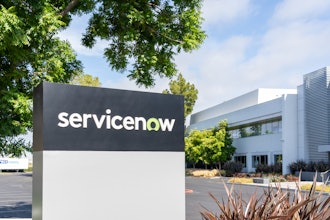Telecom inventory management traces its roots to the days of Alexander Graham Bell, through hand-cranked telephones on shared-party lines, to Lilly Tomlin’s Ernestine the nosy switchboard operator and the late Glen Campbell’s “Wichita Lineman,” written in 1968. Then came computers, the internet and wireless devices. By the 1980s it was clear that a convergence in telecom technology was going to be transformative for all enterprises.
Today, an estimated 6 of 10 Americans work outside the office at least part-time, according to Citrix, which also reports that employees use three or more devices daily for work activities and that the number of devices managed in the enterprise increased 72 percent from 2014 to 2015. With the advent of smartphones and tablets, and the Internet of Things (IoT) rising, how are manufacturing enterprises coping with managing these huge, fast-changing and vitally important inventories?
As manufacturers employ new technologies, increase reliance on automated solutions and adapt to globalization of supply chain they are increasingly required to add new levels of maturity and management to their telecommunications services. Procurement departments are being forced to look for opportunities to improve their levels of engagement with telecommunications suppliers, focusing on service levels, risks, and costs. After reviewing options to make or buy suitable solutions many organizations seek outside expertise to improve engagements with suppliers of telecommunications services.
Key Pain Points
- Access to benchmarking data to facilitate renegotiation
- Large global and complex organization
- Low visibility into which services they own and their costs
As organizations look forward and decide how to tackle the challenges of digital transformation, understanding the existing infrastructure and how it is being utilized becomes more and more important. I doubt anyone misses the days when we needed a forklift to handle the enterprise telecom bill, mobile phones were on individual contracts normally submitted through expenses or the data network was a highly complex point-to-point network requiring command prompt programming. As we move into the “clouds” a clear understanding and solid documentation around Enterprise Global Technology Inventory is emerging as one of the greatest challenges facing organizations on this journey.
Any organization’s technology infrastructure is in a constant state of flux -- new lines and circuits being added every month, devices being connected and disconnected quarterly as new employees begin and others retire or leave, license management all spread across dozens of global vendors making it difficult to keep an accurate and up-to-date inventory. But there are some best practices to follow to meet the management challenges. Among them:
- Managing, tracking and overall being mindful of your inventory is one of the most important first steps to taking control over your expenses and transformation plans. Know what you have. Know where the services are located and to whom they are assigned. Understand what the services are used for and how they will be used in the future.
- A billing inventory associating costs to the infrastructure is critical to support business cases development and help project teams prioritize.
- Creating a baseline of costs to enable planning and to measure progress against is important in any transformation project.
- Leveraging the inventory baseline to support transformation and measure savings allows organizations to monitor progress and understand status.
- Monitoring transition allows an organization to increase and often accelerate infrastructure and related savings while allowing the project team to focus on the core deliverables.
The acceleration of public, private and hybrid cloud-based solutions together with the increased use of wireless infrastructure are game changers allowing manufacturing and other enterprises to take advantage of significant savings opportunities assuming the current costs are eliminated as part of the transition. In recent months we have seen many organizations who have embarked on this journey stumble, leaving large chunks of inventory and the associated costs dangling as they try to establish what can and cannot be disconnected.
As the basic technology inventory continues to converge and organizations put the building blocks in place to leverage these new opportunities to streamline, improve and drive savings new challenges are sure to emerge particularly around tracking and allocation of costs.
AOTMP research indicates organizations with an accurate telecom inventory were able to generate 300 percent more in contract negotiation savings compared to those without an inventory.
When we look at this globally, we have seen acceleration of new and transformational technologies in many of the emerging markets at a much faster pace than countries still burdened with antiquated infrastructure. The complete shift to virtual and on-demand models including terrestrial solutions, integrated wireless and edge computing models will tilt the playing field toward organizations that can adapt and transform their current infrastructure quickly and effectively.
Be prepared to take advantage of these new opportunities by understanding, documenting, and constantly optimizing what you have today so you can manage, adapt and transform at the speed of tomorrow.
Chris Newman is Vice President of Tangoe Advisory Services – Global Engagements.























